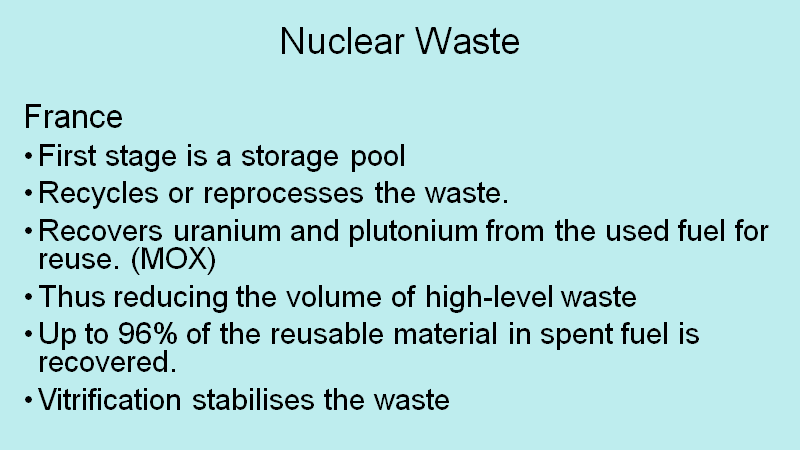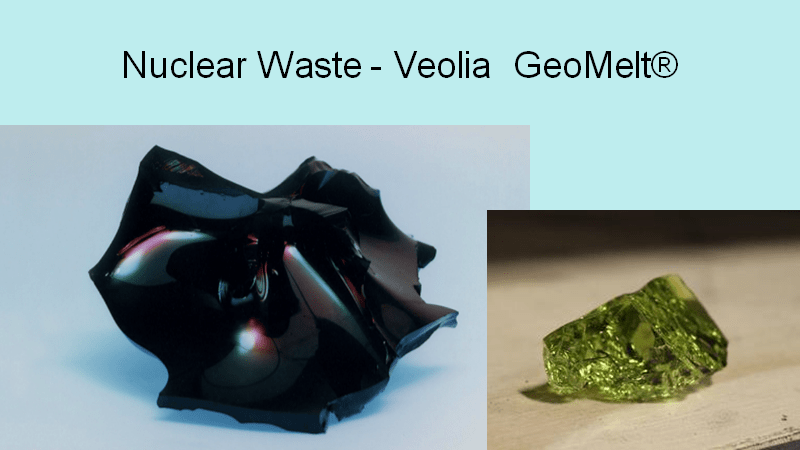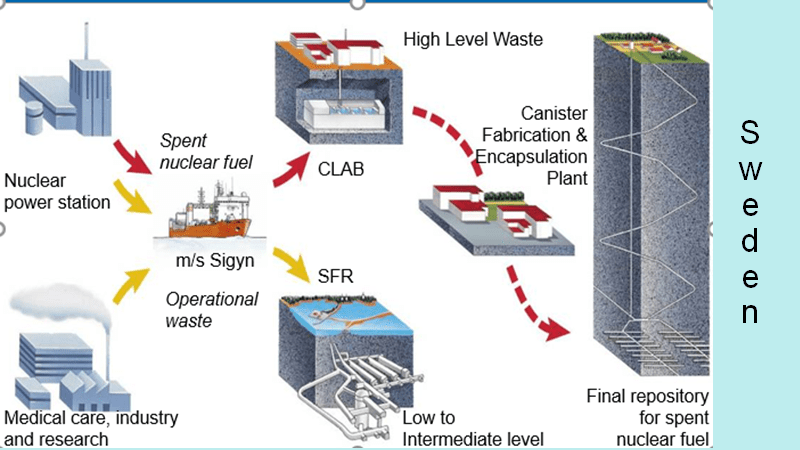
Most of the information in this post relates to high level waste such as used nuclear fuel.
About 2 billion years ago. there were 17 naturally occurring nuclear reactors in the Oklo region of Gabon. Discovered in 1972, these areas have provided a lot of information on the movement of nuclear by-products in various rocks over great periods of time. Sweden in particular has used this information to help design the canisters and long term storage surroundings for their nuclear waste.
The EU decided that deep repository storage should be the ultimate graveyard for high level waste. Once sealed these repositories can be entirely forgotten. They do not need further human intervention of any kind.
Most high level waste is still above ground as it is initially thermally hot and is either cooled in water or in air. These canisters are extremely robust and safe, one can stand beside them. There are many designs used by different countries. Some of the techniques are described below.





Australia’s ANSTO has produced a similar vitrification process and improved it over several decades. The technology is sold to others. One of the interesting uses of the Veolia process is to trap or destroy nasty, toxic organic wastes while entombing nuclear wastes.
The next few slides come from a talk I gave on Sweden’s nuclear industry a few years ago. I have recycled some of those slides.

Unfortunately, due to Germany’s influence condemning nuclear power after the tsunami that ravaged parts of Japan, even Sweden started to plan early closures of its nuclear facilities. As a result, the careful planning, including the economics were thrown into disarray. A large amount now has to be paid by the power plant owners in order to cover earlier disassembling of the plants and waste storage. As a result, the price of the power they can offer to the market is now much higher and not so attractive. This has resulted in less power being sold and an even higher tax being placed on the power plant operators. It seems to be the influence of the Green Party in Sweden that caused all the disruption even though they are not the majority party. Recent surveys suggest that most Swedes are still very pro-nuclear.





Copper has been shown to be particularly stable and trap any nucleotides. A gaseous nucleotide in extremely small quantities that can escape as illustrated in Gabon, is fully trapped by a centimetre or so of bentonite clay. In reality, this is a triple level safety concept. Each layer is probably enough to do the whole job on its own.

I was informed in Sweden in 2009, that Finland had decided to copy the Swedish model. It is ironic that Finland have beaten Sweden in finishing the construction of a final repository. Finland’s Green Party is pro-nuclear. I suspect that the long hold up in Sweden was political in nature. Sweden had to wait for years for the final permissions to be granted.
This video was given to me when David and I visited Sweden in 2009. The quality of the medium is not so good but the contents are great! A number of videos follow this one and the sound levels vary considerably. This video is quite loud.
My husband and I have stood looking at the interim high level waste pool shown in this video. We did not need any type of protective clothing.



Some Gen 4 designs for nuclear power reactors are based on the reuse of the so-called waste fuel. Indeed, there have been pleas to not make the waste too hard to access again by nuclear companies.
The next video comes from https://www.kiteandkeymedia.com/videos/is-nuclear-energy-and-waste-safe-or-dangerous-and-how-to-manage-storage-disposal-radiation/

Sellafield waste reprocessing facility is closing down.
This next video is an excellent one explaining about Finland latest additions to their nuclear portfolio including their deep nuclear waste repository.
This video comes from The B1M on YouTube https://www.youtube.com/watch?v=kYpiK3W-g_0&t=4s